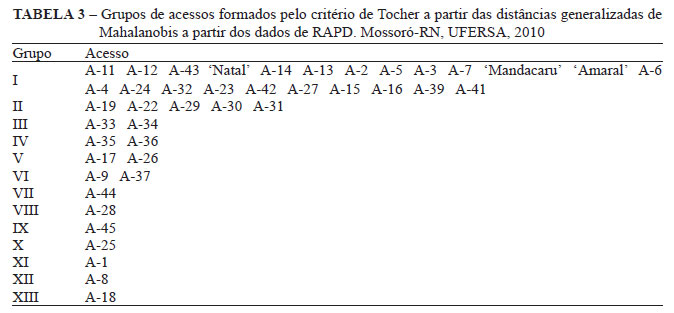The melon plant is distributed all over the world, and it is the species that possesses the largest phenotypic variability of the genus, observed mainly in their fruits. There is a great variability that consists of important germoplasm source for improvement programs. Therefore, the knowledge of the genetic variability of vegetable species and how it is distributed provides the rational and maintainable use of the genetic resources. The objective of the present study it was to characterize 40 accesses and three commercial cultivars of melon collected in the Brazilian Northeast by RAPD markers. Forty of the 18 RAPD primers analyzed, of which generated 139 polymorphic markers. Through of the genetic similarity data were obtained 32 groups and the similarity among the genotypes varied from 36 to 100%. It was verified that the RAPD markers were satisfactory to detect the polymorphism among the genotypes analyzed. The Tocher and hierarchical grouping methods agreed partially. The germoplasm bank of UFERSA presents high genetic variability among the accesses.
Cucumis melo; germoplasm; RAPD marker




